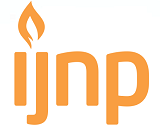Efektifi tas Salep Ekstrak Daun Binahong (Anredera Cordifolia (Ten) Steenis) Terhadap Proses Penyembuhan Luka Bakar Derajat 2 Termal pada Tikus Putih (Rattus Novergicus)
DOI:
https://doi.org/10.18196/ijnp.v2i1.667Abstract
Background: Burns are the most often occur at home and found that second degree burns is the highest prevalence. The process of wound healing can be accelerated by using traditional medicines, one of them is Binahong (Anredera cordifolia (Ten.) Steenis) The aim of this research was to study the effectivity of Binahong (Anredera Cordifolia (Ten) Steenis) leaf extract ointment for burns and to study the diff erences activity of Binahong leaf extract ointment (Anredera cordifolia (Ten) Steenis) with concentration 10%, 20 % dan 40%. The Randomize Control Triall was applied. The subject in this research were 40 White rats chosen by random method, devided into fi ve groups, namely negative control, positive control and treatment group with concentration 10%, 20 % dan 40% of Binahong leaf extract ointment. Burn induced in this research is scalds, 2x2 cm size. All samples were induced with second degree burn for 21 days. The healing was assessed with macroscopic (Sussman Wound Healing Tool) and microscopic (degree of collagen formation, degree of new epitelization and number of neovascularization) One Way ANOVA analysis showed no significant difference in wound healing macroscopically with p> 0.05 were obtained the results of Mann Whitney test p = 0.037, means there is no difference between the control group picture of necrosis negative with the positive control group. One Way ANOVA analysis showed no significant difference in epithelial thickness and collagen among the fi ve groups with p>0.05. One Way Anova test results obtained for vascularisation p = 0.028 (p <0.05) which means that there are signifi cant diff erences in vascularisation or angiogenesis in to fi vegroups. Post Hoc Test test showed angiogenesis differences between the negative control group with the intervention group SEDB 20% with p =0.005 between the intervention group and 40% ESDB ESDB the intervention group 20% with p= 0.023.The result: The results of this study did not reveal any significant differences in healing of second-degree thermal burns in rats whereas the macroscopic microscopic observations were no significant differences in angiogenesis. Based on the clinical picture SEDB 40% had clinical features healing second-degree thermal burns better than the other group.
Key words: Binahong (Anredera cordifolia (Ten.) Steenis), burns, collagen, epitelisation, angiogenesis
Downloads
Published
2015-06-20
Issue
Section
Articles
License
License
Articles published in the IJNP (Indonesian Journal of Nursing Practices) are licensed under a Attribution 4.0 International (CC BY 4.0) license. You are free to:
- Share — copy and redistribute the material in any medium or format.
- Adapt — remix, transform, and build upon the material for any purpose, even commercially.
This license is acceptable for Free Cultural Works. The licensor cannot revoke these freedoms as long as you follow the license terms. Under the following terms:
Attribution — You must give appropriate credit, provide a link to the license, and indicate if changes were made. You may do so in any reasonable manner, but not in any way that suggests the licensor endorses you or your use.
- No additional restrictions — You may not apply legal terms or technological measures that legally restrict others from doing anything the license permits.
Copyright
Authors who publish with IJNP (Indonesian Journal of Nursing Practices) agree to the following terms:
- Authors retain copyright and grant IJNP (Indonesian Journal of Nursing Practices) the right of first publication with the work simultaneously licensed under an Attribution 4.0 International (CC BY 4.0) that allows others to remix, adapt and build upon the work with an acknowledgment of the work's authorship and of the initial publication in IJNP (Indonesian Journal of Nursing Practices).
- Authors are permitted to copy and redistribute the journal's published version of the work (e.g., post it to an institutional repository or publish it in a book), with an acknowledgment of its initial publication in IJNP (Indonesian Journal of Nursing Practices).














